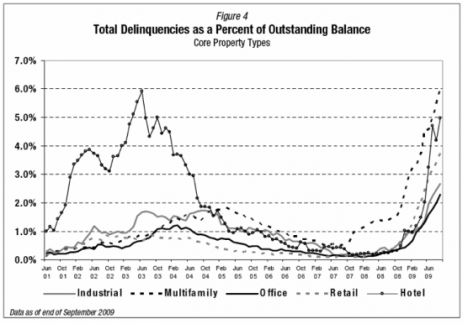Disappointing reports this week on housing starts and foreclosures, as well as the index of leading economic indicators, have cast a bit of a pall on the “robust recovery” story, putting a crimp in the stock market’s ascent in the process.University of Texas professor James Galbraith was never a believer in the V-shaped recovery and says it’s going to take a very long time for the U.S. to recover from a “truly extraordinary slump.”What the optimists are missing is the impact the housing bust is having on both American’s ability to borrow and banks willingness to lend. The resulting credit contraction will prevent this recovery from following the path of those following prior post-war recessions, he says.”There’s no question the U.S. economy has stabilized but [it] remains very weak and will likely continue to be weak,” Galbraith says. “There’s very little sign the benefits that are being felt on Wall Street will be felt in the broader country anytime soon.”Galbraith predicts the unemployment rate will continue to rise into 2010 and decline “very slowly” thereafter. The U.S. economy needs “substantially greater policy intervention,” he says, focused on the following: * Housing Woes: As of Sept. 30, over 14% of American homeowners with a mortgage are either behind on payments or in foreclosure, the Mortgage Bankers Association said Thursday. Those figures suggest the real inventory of homes for sale is much bigger than the “official” 8-month supply, as The WSJ reports. The government must do more to prevent foreclosures, Galbraith says. * Smart Jobs: Beyond merely putting people to work, Galbraith seeks policies that would both “create employment and set a strategic direction for the economy,” most notably in the area of renewable energy. * Boomer Blues: With millions of Baby Boomers at or near retirement age, Galbraith advocates aid for new retirees, “so the demographic transition goes more smoothly than it otherwise would. “In sum, Galbraith still says we need a second stimulus package, as we’ll discuss in more detail in a forthcoming segment.
Vodpod videos no longer available.
Filed under: Credit Crunch, economics, Economy | Tagged: economics, Economy, Future, James Galbraith, Jobs, Recession | Leave a comment »





